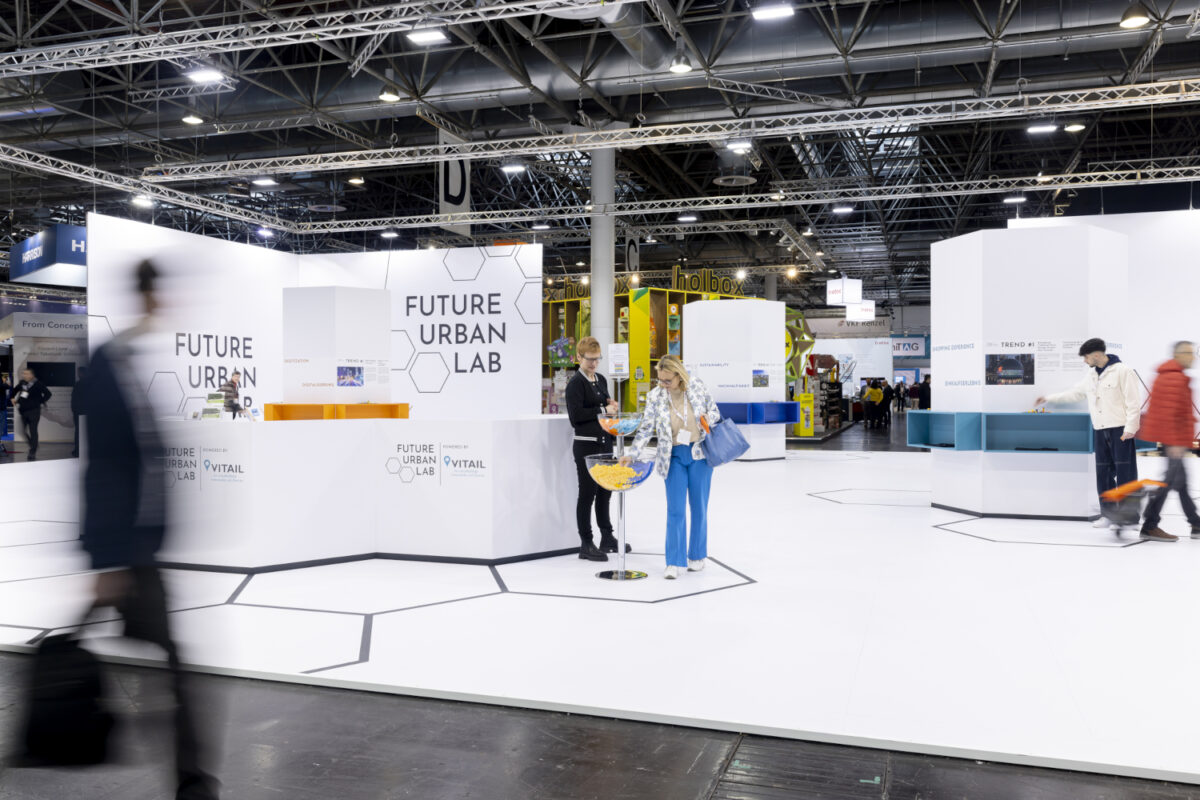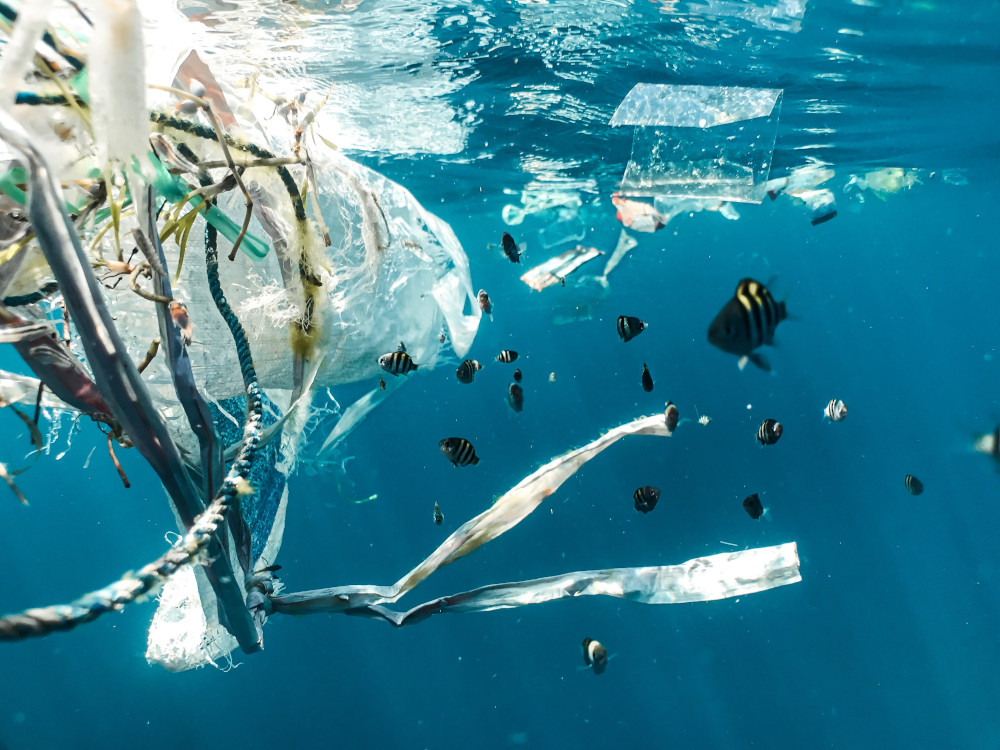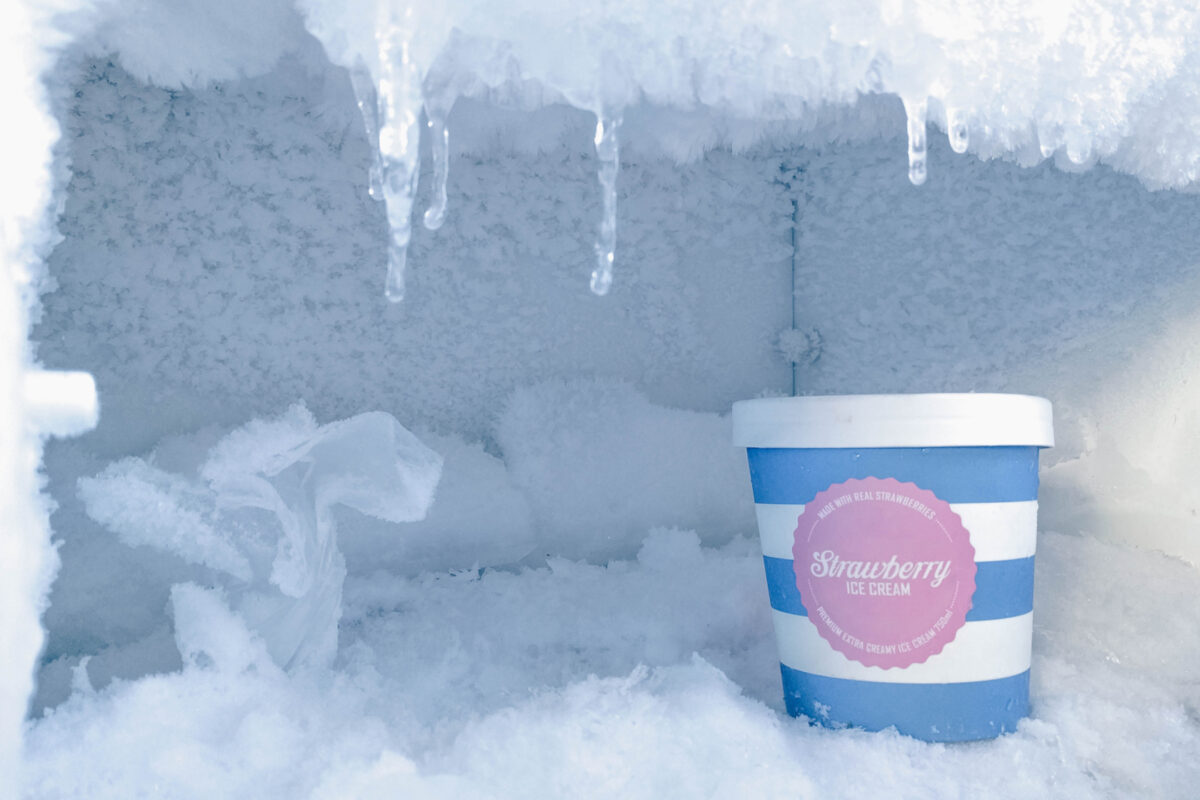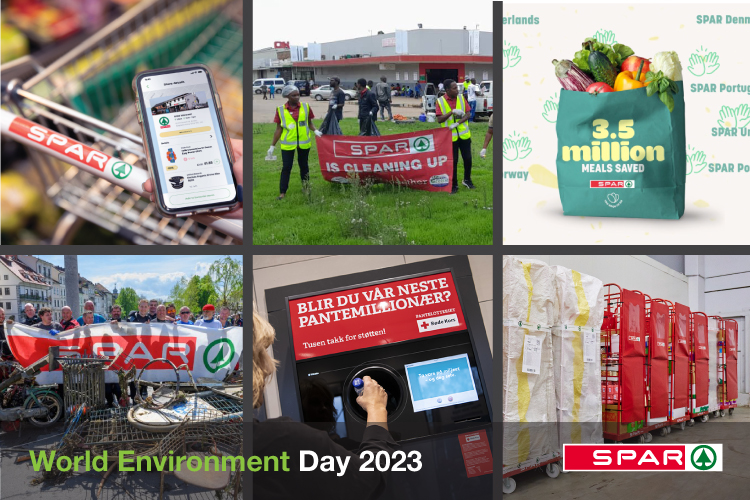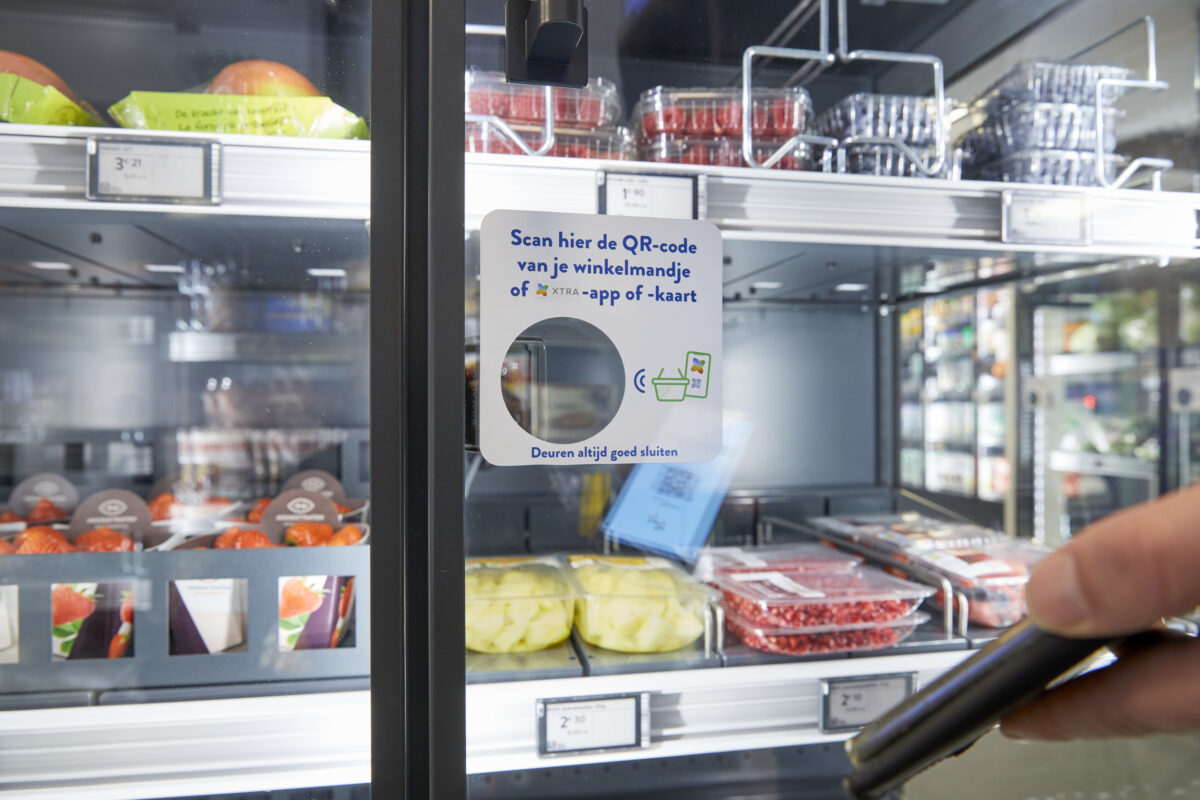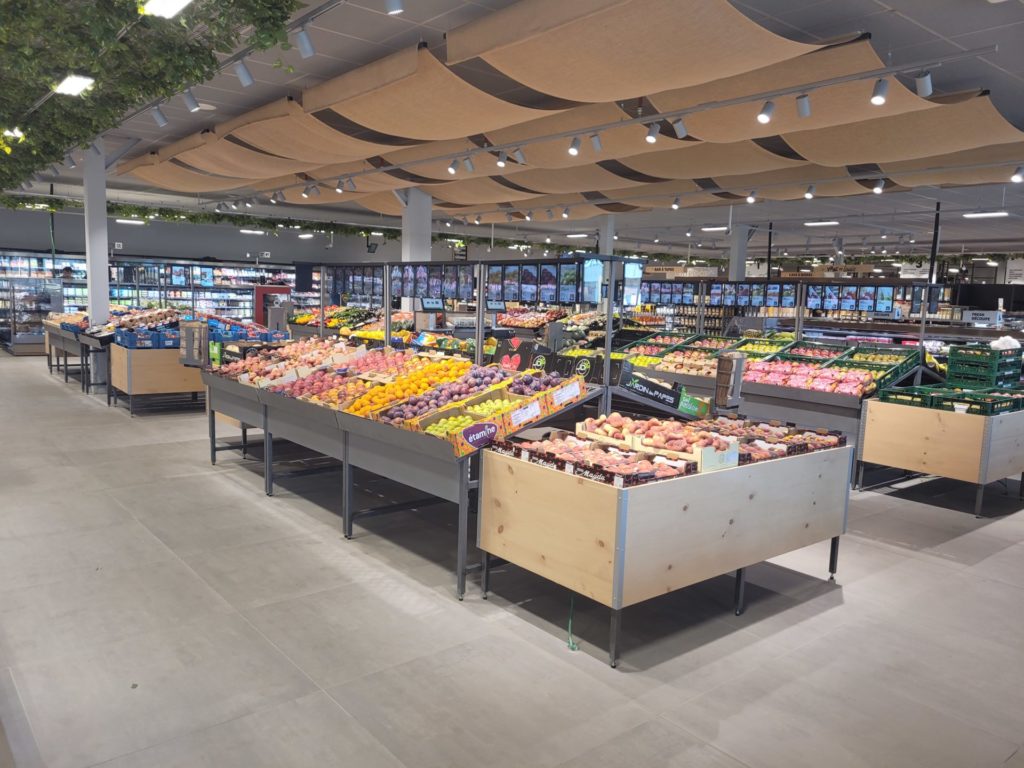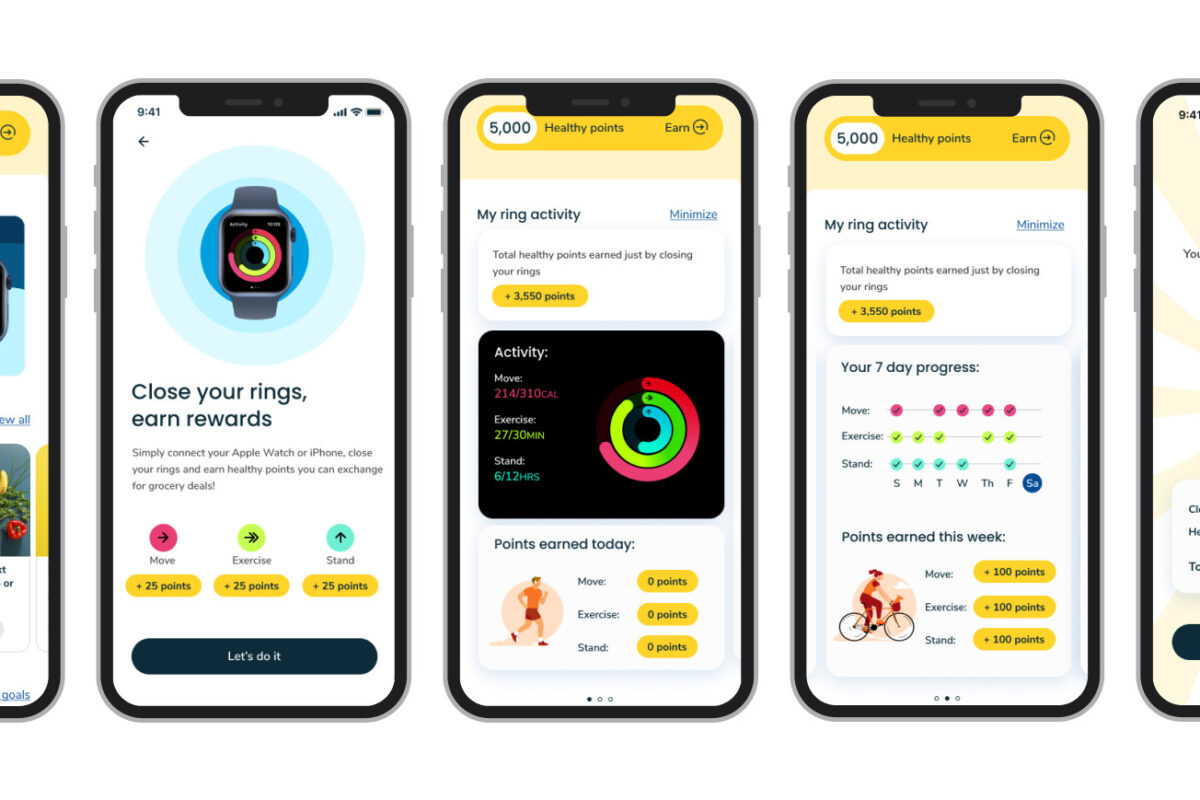The Refrigerant Transition Hub aims to help retailers in North America initiate the cooling revolution
by Julia Pott (exclusively for EuroShop.mag)
What do yogurt and the earth have in common? They need to be refrigerated! Sounds strange, but it’s true: Yogurt will only stay shelf-stable if the cold chain isn’t broken, and the Earth is only likely to remain habitable if we limit global warming. Yes, okay, the connection is a bit flimsy …

© Eduardo Soares/Unsplash
But there is one connection that is undeniable: food refrigeration in grocery stores is directly linked to global warming and climate change. That’s because, according to the North American Sustainable Refrigeration Council (NASRC), a nonprofit environmental organization that promotes climate-friendly natural refrigerants, supermarkets play a significant role in meeting global climate goals and limiting global warming.
Cooling, refrigerants and climate change
Many grocery stores use hydrofluorocarbon refrigerants, or HFCs. HFCs are considered “super greenhouse gases” because they store enormous amounts of heat. At the same time, the demand for HFCs is increasing as the demand for cooling and refrigeration increases worldwide.
NASRC has collected some data to illustrate the role of HFCs in the food trade in climate change:
- The global-warming effect of HFCs can be several thousand times greater than that of CO2.
- HFC emissions could contribute 0.5°C to the warming of the Earth’s atmosphere by 2100.
- About 60% of HFC emissions are due to leaks from refrigeration and air conditioning systems.
- And commercial refrigeration contributes about 36% to these emissions. On average, supermarkets lose about 25% of their total refrigerant volume per year.
The use of HFCs is to be curbed with the help of international agreements and national laws. In the USA, for example, the AIM Act came into force in 2020, a law that aims to gradually reduce greenhouse gas emissions from HFCs by 85% by 2036. In the EU, too, the Fluorinated Greenhouse Gases Regulation aims to reduce HFCs to one-fifth of current sales levels by 2030.
But what does the HFC reduction mean for retailers?
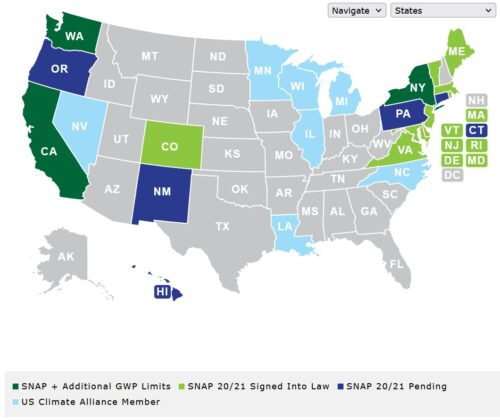
On NASRC’s homepage, an interactive map shows whether and how U.S. states are addressing HFC refrigerant reductions by law. The states colored in light blue have committed to the Paris Climate Agreement’s 1.5-degree target, and the states colored in dark blue intend to legislate HFC refrigerants. Only the green-colored states have already adopted such regulation.
Graphic: Screenshot www.nasrc.org/hub // © NASRC
“We have a huge opportunity to solve one of the biggest environmental problems facing supermarkets,” cautions Danielle Wright, executive director of NASRC, in a press release, because such measures lead to shortages of refrigerants and significant price increases. But there is also good news, because the issue of commercial refrigeration “[…] is one of the rare climate issues where the technology solution exists today,” Wright explains.
A good solution, not only the NASRC finds, is to switch to more climate-friendly refrigerants with a significantly lower impact on global warming. Natural refrigerants include hydrocarbons such as propane or butane, as well as other gases such as carbon dioxide and ammonia. (You can learn more about CO2 as a natural refrigerant in our article on innovative refrigeration systems at Co-op UK).
The Refrigerant Transition Hub was created to help drive this very change and support entrepreneurs in doing so. Resources provided include information, podcasts and events on current legislation, refrigeration technologies and financial support for transition projects. Wright promotes NASRC’s offering: “Retailers need neutral information to help them make the right decisions. NASRC works in partnership with the supermarket industry, so we are uniquely positioned to identify the gaps in available resources.”
Reconstruction, financing and personnel: tasks for everybody
However, there are some hurdles to overcome: The initial cost of purchasing a refrigeration system based on natural refrigerants is high. Hardware and installation cost more than for conventional HFC systems. When setting up new stores, the investment may still be worth it to many retailers, but more persuasion will most likely be needed to replace existing equipment. Here, financial incentives, innovative financing solutions and subsidies must be created.
Another challenge for both the industry and society is to acquire enough qualified personnel to install and maintain the technologies.
In the long run, however, such investments can pay off. Using the example of a Grocery Outlet store in Sacramento, California, the conversion showed significant savings in annual energy consumption (27%) and energy costs (23%), as well as a large reduction in greenhouse gases emitted: 36% compared to a similar store with an HFC system and 92% compared to the national average according to the U.S. Environmental Protection Agency.
In Germany, retailers looking into the issue can find advice and resources from the HDE trade association, for example. These include guides, checklists and support programs to help save energy in the area of refrigeration and use more environmentally friendly technologies. What is also important in this conversion phase, according to the HDE homepage, is linking retailers with specialist companies and cooperation within the industry. “We have a huge opportunity to solve one of the biggest environmental problems facing supermarkets,” Danielle Wright summarizes the situation. “To do this, we need all stakeholders at the table, ready to drive solutions.”






